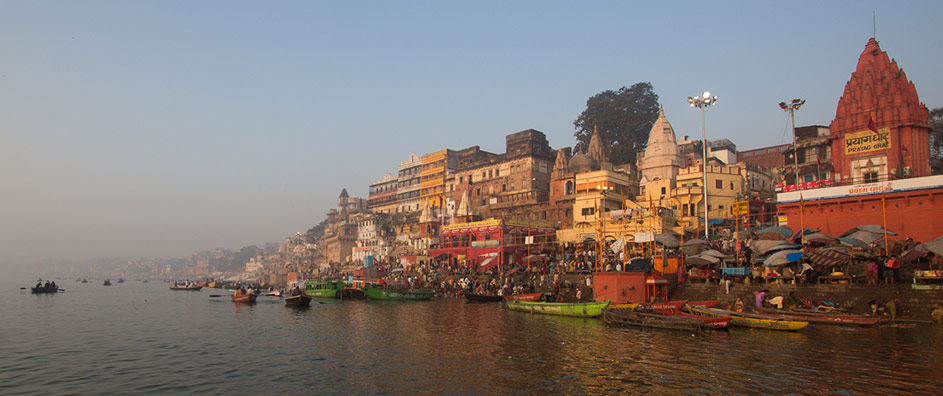Embarking on a pilgrimage to the Holy Ganges offers myriad lessons embedded in the sacredness of the river itself, illuminating the Bahá’í teachings which emphasize unity, service, and the profound interconnectedness of humanity. The Ganges, often revered as a lifeline of spirituality in India, serves as a captivating allegory for the journey of the soul—a fluid entity that transcends the physical realm while navigating the realm of existence. In this exploration, we delve into the numerous insights gleaned from such a sacred sojourn, examining the lessons that resonate within the Bahá’í framework.
The Ganges flows with an unyielding grace, traversing varied landscapes and cultures—much like the teachings of Bahá’u’lláh, which seek to bind the diverse tapestry of humanity into one cohesive fabric. The river is a tangible manifestation of purity; its water, sanctified by centuries of reverence, parallels the pursuit of spiritual purification in the Bahá’í Faith. Just as devotees immerse themselves in the Ganges, shedding worldly impurities, Bahá’ís are beckoned to cleanse their spirits through acts of service and moral rectitude.
Moreover, the pilgrimage to this holy river embodies the notion of pilgrimage itself—an external quest mirrored by an internal journey. Each step taken along the banks of the Ganges reflects the Bahá’í teaching that personal transformation is rooted in collective advancement. As individuals engage with the river, a microcosmic reflection of the human experience emerges, highlighting the interconnectedness of all souls striving for enlightenment.
One of the cardinal principles observed along this journey is the potency of unity. The Ganges is not merely a body of water; it is a confluence of souls, beliefs, and rituals—each tributary contributing its unique essence. This diversity, while seemingly multifarious, reinforces the Bahá’í conviction of oneness, wherein the myriad expressions of faith coexist in harmony. Pilgrims gather at the river not solely to individualize their experience but to partake in a collective ritual, thus exemplifying the power of unity in diversity.
Furthermore, the river serves as a reminder of the transitory nature of existence. The current, relentless and ever-changing, symbolizes life itself: ephemeral and yet eternally flowing. This notion resonates deeply within the Bahá’í teachings, which emphasize the importance of embracing change as a vehicle for growth. The pilgrimage becomes an exercise in resilience, urging followers to adapt and align themselves with the divine purpose that undergirds all existence.
As the sun rises above the Ganges, bathing it in ethereal light, one is struck by the metaphor of illumination—a prominent theme in Bahá’í writings. The dawn heralds a new beginning, casting shadows of ignorance aside in favor of enlightenment. This profound symbolism of light aligns with the Bahá’í ideal of knowledge, signifying that the pursuit of truth is essential in dispelling darkness both individually and collectively. Through the pilgrimage, one learns that education and enlightenment are vital tools for humanity’s advancement.
In moments of reflection by the riverbank, a poignant realization dawns: the Ganges does not possess the capacity to discriminate. It welcomes all without prejudice, irrespective of caste, creed, or religion. This aspect poignantly embodies the Bahá’í teaching that emphasizes the eradication of prejudice, advocating for a society where diversity is celebrated, and love is the predominant force. It is a reminder that the sanctity of the human spirit transcends artificial divisions, underscoring the imperative for mutual respect and understanding.
Furthermore, the pilgrimage unveils a deeper layer of personal sacrifice and service. Observing the myriad rituals and acts of devotion performed by fellow pilgrims invites contemplation of one’s own role within the greater tapestry of life. The Bahá’í teachings encourage concrete expressions of service, asserting that true spirituality manifests through selflessness. Just as the Ganges nourishes the parched earth, pilgrims are called to nourish the body of humanity, fostering compassion and kindness towards one another.
The scenery along the banks of the Ganges, acutely juxtaposing natural beauty and human endeavor, evokes contemplation on the idea of stewardship—a core Bahá’í belief. As the river nourishes the land, representatives of all faiths engage in preserving its sanctity, acknowledging the obligation to safeguard the environment. This mirrors the Bahá’í emphasis on the essential relationship between humanity and nature and the necessity of cultivating an ecological consciousness for the sustainability of future generations.
Ultimately, the pilgrimage to the Holy Ganges epitomizes the integration of the material and spiritual worlds. Each ripple in the water serves as a reminder of the divine presence in the mundane, echoing Bahá’í teachings on the simultaneous pursuit of material and spiritual development. The journey reinforces the understanding that spiritual growth must coincide with progress in the physical world—a symbiosis that cultivates the emergence of a just and equitable society.
In conclusion, the lessons derived from a pilgrimage to the Holy Ganges weave together the essence of Bahá’í teachings—unity, illumination, service, and stewardship. Each insight garnered along this sacred path illuminates the journey of the soul, urging individuals to embrace their interconnected role within the grand mosaic of humanity. This pilgrimage, steeped in spirituality and reflection, becomes not only a physical journey but a transcendental odyssey towards understanding, compassion, and a collective awakening to the divine potential held within each individual.
